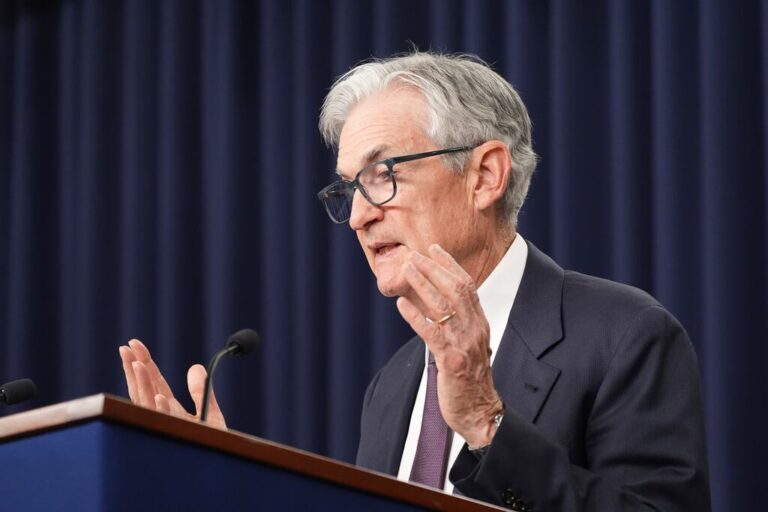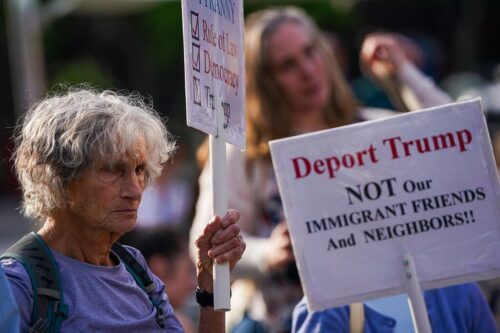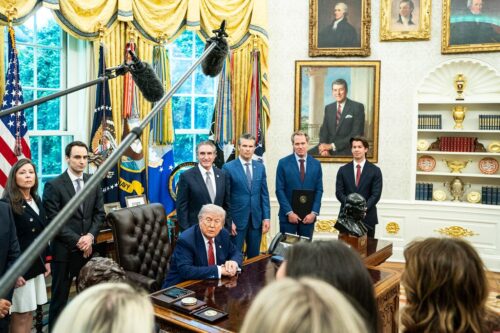Before the Federal Reserve’s meeting this month, investors were still holding out hope that the central bank would soon restart the interest rate cuts that it put on pause in January. But minutes from that gathering underscore how wedded officials were to their wait-and-see approach amid extreme uncertainty about the economic outlook.
A record of the Fed’s May 6-7 meeting, released Wednesday, highlighted the overwhelming support among officials to hold off on cutting rates until they had more clarity about President Trump’s policies and how the economy was responding to whipsawing tariffs, tax cuts, immigration restrictions, and other cornerstones of his administration’s agenda.
“Participants agreed that with economic growth and the labor market still solid and current monetary policy moderately restrictive, the Committee was well positioned to wait for more clarity on the outlooks for inflation and economic activity,” the minutes said.
Uncertainty about the outlook had become “unusually elevated,” officials said, “making it appropriate to take a cautious approach until the net economic effects of the array of changes to government policies become clearer.”
The meeting took place just before some of the most aggressive tariffs against China were temporarily rolled back, a move that helped to ease fears that Americans would soon face shortages and that the economy was headed for a much more substantial downturn. Even as Trump has announced trade agreements with some countries, he has ratcheted up tensions with others, including threatening 50 percent tariffs on imports from the European Union last week before delaying them days later.
Officials concluded at the May meeting that the tariff increases at that point had been “significantly larger and broader than they had anticipated,” the minutes said.
Trump’s tariffs, many of which are still in place on all of the country’s major trading partners, are broadly expected to slow growth while raising inflation. That is a tricky combination that risks the Fed’s having to make a difficult call about whether it should focus on taming price pressures or protecting the labor market. Further complicating the outlook, US government bond markets have seized up in recent weeks as Republicans try to push through a bill that would significantly raise the deficit by slashing taxes without significantly cutting spending.
The minutes indicated that officials discussed the possibility of “difficult trade-offs if inflation proves to be more persistent while the outlooks for growth and employment weaken.” The risk of that outcome had risen, according to the account of the discussion.
The Fed’s staff at the time warned that a recession was “almost as likely” as its forecast for subdued growth and higher unemployment. They also raised their forecast for inflation from previous estimates in March. Tariffs, they said, were expected to boost inflation “markedly this year” and continue to bid up price pressures in 2026 before inflation trended back to the 2 percent target by 2027. That combination carries the whiff of stagflation.
The Fed is not facing any economic trade-off just yet, bolstering officials’ confidence that they can afford to be patient about rate cuts. At the May meeting, Fed Chair Jerome Powell went so far as to say there was “no cost” to the central bank’s waiting to make a move.
Layoffs are still low, as businesses have opted against making big decisions about their workforces, and longer-term investments given the constant flux of policy positions originating from the White House.
Some companies, such as Walmart, have warned that they may soon be forced to pass along tariff-related price increases to customers. If Americans — already under strain after years of high inflation — cut back on spending, that would deal a blow to businesses. The fear is that companies would then be forced to slash jobs in order to reduce costs.
A drop in demand may end up limiting the extent to which tariff-related price increases morph into a persistent inflation problem. But Fed officials, scarred from misdiagnosing the post-pandemic inflation surge, do not want to again underestimate the potential for it to flare up again.
Some officials expressed concern that expectations about inflation over a longer time horizon could begin to “drift upward, which could put additional upward pressure on inflation,” the minutes said.
Given this fear, the Fed has set a high bar for rate cuts: clear evidence that the economy is weakening.
Traders in federal funds futures markets now see at least one quarter-point cut this year. Around the May meeting, they had thought the Fed would move three times.
This article originally appeared in The New York Times.
Ignoring warning signs, Trump presses his economic agendaFederal Reserve leaves key rate unchanged as it sees risk of higher prices and higher unemployment



